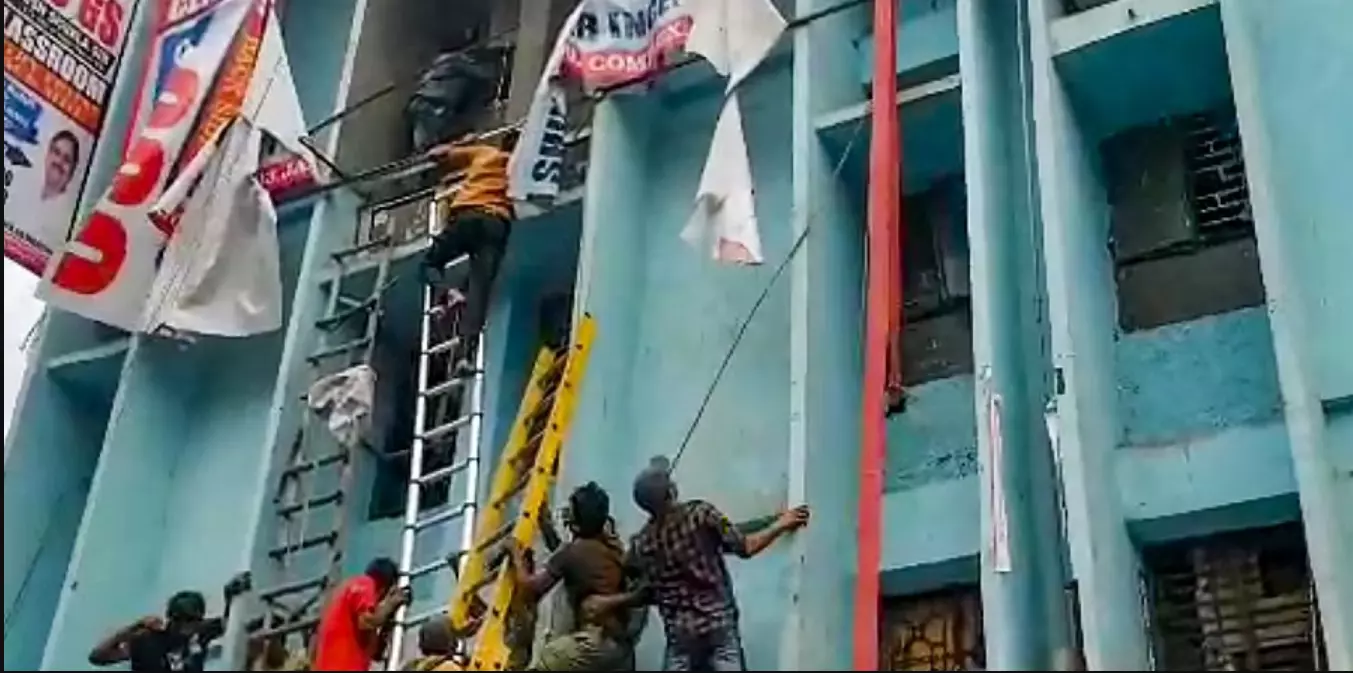Fighting the inferno
Owing to legal lacunas and ambiguous safety regulations, fatal fire accidents are on the rise — creating an urge for meaningful action; writes Kartikey Singh

On July 25, the Delhi HC directed the Delhi government and Municipal Corporation of Delhi (MCD) to close down the coaching centres operating without a ‘No Objection Certificate’ (NOC) from the fire department. The order was prompted by a recent fire that broke out in a building located in northwest Delhi’s Mukherjee Nagar, a hub of coaching centres, injuring over 60 students. Commenting on the incident, the Delhi Fire Service (DFS) chief said that “the building lacked firefighting equipment and have violated multiple safety regulations”. In 2019, a similar tragic accident in Surat, Gujrat, claimed the lives of at least 22 students.
NCRB data
The National Crime Records Bureau's (NCRB’s) latest report on 'Accidental Deaths and Suicides in India-2021' highlighted 8,491 cases of ‘fire accidents’ in the country, resulting in injuries to 485 individuals and 8,348 fatalities. Among the reported fire accidents, residential or dwelling buildings accounted for 50.8 per cent of total deaths, with 4,240 out of 8,348 reported in 2021. Notably, a large number of the coaching centres are run in the residential areas in the national capital. Furthermore, a State/Union Territory-wise analysis revealed that 22 states and UTs reported 50 per cent or more deaths due to ‘fire in residential or dwelling buildings' in 2021. These States are; Mizoram (100 per cent), followed by Assam (95.7 per cent), Himachal Pradesh (88.2 per cent), Karnataka (86.9 per cent), and Tripura (86.4 per cent).
In 2021, among the causes, ‘Electrical Short Circuits’ and ‘Cooking Gas Cylinder/Stove bursts’ were the country’s major causes of ‘Accidental Fire’, causing 1,657 deaths and 1,585 deaths respectively, across the country.
Fire safety regulations
Article 243W of the Indian Constitution entrusts municipalities in India with various activities as outlined in the 12th schedule, including the provision of ‘fire services’. Further, the regulation of ‘fire prevention’ and ‘firefighting services’ is under the authority of the respective States, Union Territories (UTs), and Urban Local Bodies (ULBs). As a result, the rules governing fire prevention and protection take the form of State Regulations or Municipal By-Laws, which means States are required to make comprehensive laws to address the issue.
In addition, the National Building Code (NBC) of 2016, by the Bureau of Indian Standards, serves as the primary model code in India for ‘building construction’ and ‘fire safety’. However, it is critical to note that the NBC is considered a "recommendatory document," and it is expected that state governments will integrate its guidelines into their local building by-laws, thereby making compliance with the recommendations mandatory. Simultaneously, Part 4 of the NBC specifically addresses 'fire and life safety'. It is classified into three main clauses i.e., 'Fire Prevention, ‘Life Safety’, and ‘Fire Protection’. Despite being a comprehensive code, it is incorporated by the States in a convenient way to suit their purpose.
The recent crackdown
The Delhi Police in its status report filed before the court submitted that only 67 of the total 583 coaching institutes in Delhi have requisite NOC from DFS. In response, the HC ordered the Delhi government and MCD to close down all coaching centres within 30 days which are operating without a NOC from the fire department and non-compliant with the Delhi Master Plan. However, this has also caused a palpable panic among the students, as the aspirants of various government jobs will suffer, both academically and financially. While closing down the coaching, the government should also devise a solution for them.
The process of planned development of the National Capital began with the enactment of the Delhi Development Act 1957, followed by the ‘Master Plan of Delhi’ in 1962, formulated by renowned architect and urban planner, Albert Mayer, with the assistance of the Ford Foundation. The current Master Plan of 2021 is a comprehensive planning framework that outlines the vision, policies, and guidelines for the development and management of Delhi. Further, the plan also incorporates guidelines and standards for fire safety in buildings to ensure the protection of residents and properties from fire hazards. However, the announcement of a new ‘Master Plan 2041’ without addressing the current shortcomings and the lack of effective implementation of the present ‘Delhi Master Plan 2021’ raises concerns about the city's ability to address its fire challenges in a timely and meaningful manner.
The legal lacunas
First, there is no uniform fire safety regulation in India to prevent fire accidents. NBC itself indicates that it is a recommendatory document, giving state governments the flexibility to implement it partially or modify provisions for their convenience. As a result, there is a lack of ‘vulnerability analysis’ which eventually affects preparedness, response, and recovery.
Second, there is no strict implementation of the ‘safety check’ by the authorities before providing NOC to buildings, as a majority of the buildings in the country lack the necessary NOC (No Objection Certificate) from the fire department and run the institutes in residential areas in gross violation of sanctioned building plan, putting the lives of their occupants at risk.
Third, a lack of a mechanism for an independent committee to conduct periodic audits on fire installation, heating, ventilation and air-conditioning, and other electrical equipment in the buildings. Fire safety audits are effective for assessing occupancy's fire safety standards, but authorities often ignore them.
Fourth, the act of not following the regulations for fire safety and endangering lives is punishable among other laws, under the IPC (Indian Penal Code), such as section 304-A which provides for a maximum penalty of 2 years imprisonment or a fine or both. While the fire accident victims suffer daily, the inadequate punishments fail to deter violators, who maintain a lackadaisical attitude towards fire safety regulations. Urgent action is required to address these gaps and ensure the safety of invaluable lives.
Kartikey Singh is a fourth-year student at the Rajiv Gandhi National University of Law (RGNUL), Patiala. Views expressed are personal



